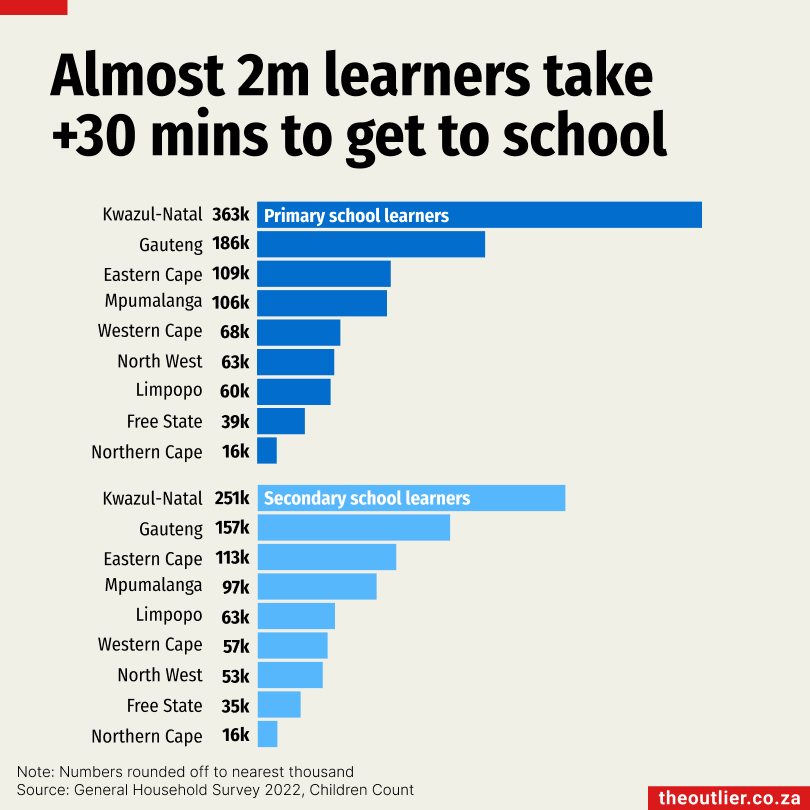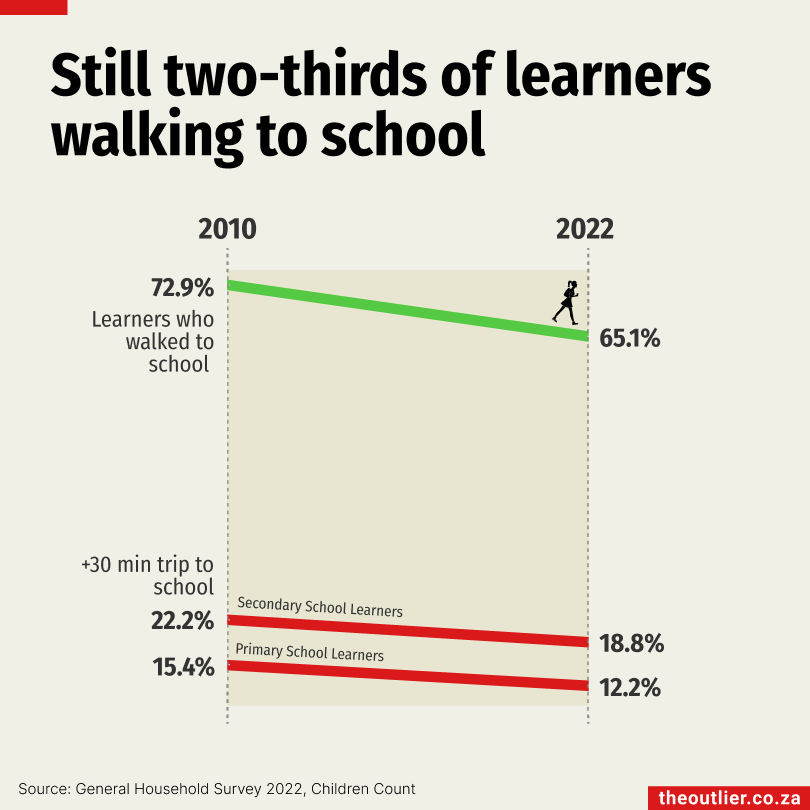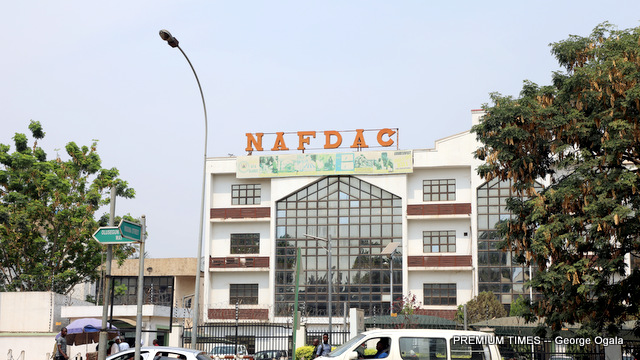There are about 15.4 million school-going children in South Africa and almost two-thirds of them have to walk to school every day, according to the Outlier website using data in the 2023 General Household Survey.
Walking to school is not necessarily a bad thing, but for many learners there are few alternatives.
Safety at risk
There is little in the way of school busses available to learners and public transport is equally limited for large parts of the country.
The many learners who have to walk long distances over difficult terrain also put their safety at risk.
In rural areas in South Africa, schools are often located far from learners’ homes and public transport is not always be accessible.
In their Basic Education Rights Handbook, Section27 writes: ‘Private transport, such as taxis, may be unavailable, unsafe or too expensive to use. In these cases, learners have no choice but to walk in order to receive an education, and often face serious challenges on their journey to and from school.’
Often these learners have to navigate difficult terrain, which leaves them vulnerable to harsh weather conditions and violence.
The second-most used mode of transport is vehicles hired by groups of parents, but only 13% of learners get to school via this method.
Just 9.3% of children travel to school in private vehicles. The rates for this mode of transport are highest in the Western Cape (23.4%) and Gauteng (16.6%), and are lowest in Limpopo (3.3%).
ETA
The 2023 Household Survey report doesn’t say how long it takes these learners to walk to school, but an analysis of the 2022 survey results by Children Count, an advocacy project of the Children’s Institute at the University of Cape Town, has data on the length of school trips irrespective of how learners travel.
It took longer than 30 minutes for just over 1 million or 12.2% of primary school learners to reach their schools and 845 000 (19%) high school learners.
Almost one-quarter of primary school learners in KwaZulu-Natal took longer than 30 minutes to get to school and 27% of high school children in Mpumalanga took the same amount of time. These were the highest percentages recorded out of all the provinces.

Section27 says some learners in KwaZulu-Natal reportedly walk up to 10km one way just to get to school, while some learners in the Eastern Cape walk even further. The trip to school can take anywhere from 90 minutes to more than two hours.
In the 2022 survey, 2.5% of children said they didn’t attend school because they just could not get there.
In November last year, then Basic Education Minister Angie Motshekga stated that 900 946 learners from 5 635 schools were in need of learner transport.
Who can help?
Parents and learners in the Eastern Cape are taking matters into their own hands, with the help of NPOs and legal services. Earlier this year, the Khula Community Development Trust and three schools – Mneketshe Junior Secondary School, SeaView Senior Secondary School and Toyise Senior Secondary School – took the Eastern Cape departments of education and transport to court over denying school transportation to learners who qualified.
An affected learner told the Legal Resources Centre, which represented the schools, ‘I must cross the Mncwasa and Mpame rivers to get to school. The two rivers do not have any bridges to use to cross. I have to take off my school uniform and get in the water, which is very cold, and it gets worse in winter. During the rainy season or when the rivers have overflowed, I cannot go to school because it is dangerous to cross the rivers.’
On 14 May this year, an order agreement was handed down that required the departments to provide scholar transport to all qualifying learners by the start of the third school term on Tuesday, 9 July.
Baby steps
The good news is that things are getting better.
The percentage of primary and high school learners taking longer than 30 minutes to get to school has decreased by about 3 percentage points since 2010
Fewer learners also walk (65%) to school now than in 2010 (73%)








